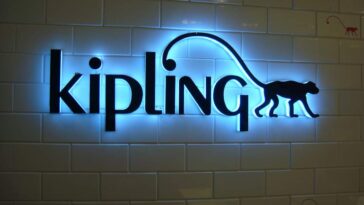In modern architecture, aesthetic appeal and structural integrity are equally important, and one of the key elements that contribute to both is facade cladding. Facade cladding refers to the application of materials to the exterior walls of a building, not only to enhance its visual appeal but also to provide protection against environmental elements. Whether for residential, commercial, or industrial structures, facade cladding plays a critical role in creating a building’s first impression while ensuring longevity and durability. In this blog post, we’ll explore the various benefits of facade cladding and why it’s becoming a preferred choice in contemporary building design.
What is Facade Cladding?
Facade cladding involves covering a building’s exterior with materials such as metal panels, glass, wood, stone, or composite materials to protect it from the elements and enhance its appearance. Unlike traditional exterior finishes, facade cladding can be designed to create distinctive textures, colors, and shapes, making it a popular option for architects looking to add personality and sophistication to their designs.
In addition to its aesthetic function, facade cladding serves practical purposes. It helps in insulation, weather resistance, and providing a barrier against pollutants. The material used for cladding depends on the design and function of the building. For instance, aluminum composite panels (ACP), ceramic tiles, and glass are common choices for high-rise buildings and commercial properties, while natural stones like granite or marble are often used for luxury homes and iconic landmarks.
Benefits of Facade Cladding
- Aesthetic Appeal: One of the most significant advantages of facade cladding is the visual appeal it adds to the building. With a wide range of materials and finishes available, architects and designers can create a unique, eye-catching facade that aligns with the overall theme of the project. From sleek modern finishes to more traditional designs, cladding allows for the expression of creativity and innovation. The right choice of cladding material can dramatically enhance a building’s appearance and make it stand out in the urban landscape.
- Protection from Weather Elements: Facade cladding provides a protective layer against the elements, such as rain, wind, heat, and snow. By acting as a shield, it helps safeguard the underlying structure of the building from water damage, corrosion, and weathering. Materials such as metal, stone, and composite panels are highly effective in preventing water penetration, ensuring the building’s longevity. This protection is particularly important for buildings located in areas with harsh climates, where extreme weather conditions can take a toll on the structure.
- Energy Efficiency: In addition to its protective properties, facade cladding can contribute to a building’s energy efficiency. By providing insulation, it helps maintain a consistent indoor temperature, reducing the need for excessive heating or cooling. For example, materials like ACP (Aluminum Composite Panel) and insulated metal panels offer excellent thermal insulation, which can lower energy bills and reduce a building’s overall carbon footprint. Properly insulated cladding can also help prevent the formation of mold and condensation, which can lead to structural damage over time.
- Low Maintenance: Facade cladding materials, particularly modern composite options, require very little maintenance compared to traditional building materials like brick or wood. Materials like aluminum and steel are resistant to corrosion and do not need to be painted or sealed regularly. Furthermore, they are easy to clean and maintain, which reduces long-term maintenance costs for building owners.
- Increased Durability: Facade cladding enhances the durability of a building by providing an additional layer of protection against external wear and tear. High-quality cladding materials can withstand environmental stress, pollution, and physical impact, ensuring that the building remains in good condition for years. This added durability helps to preserve the structure’s value and minimize repair costs in the future.
- Sound Insulation: In busy urban areas, noise pollution is a significant concern. Facade cladding can help mitigate noise by acting as a barrier between the exterior environment and the interior of the building. Materials like stone, composite panels, and insulated metal panels are excellent at absorbing sound, creating a quieter, more comfortable indoor environment. This feature is especially beneficial for residential buildings located near busy streets, airports, or other noise-heavy areas.
- Sustainability: Many modern cladding materials are eco-friendly and made from recyclable resources. For instance, materials like aluminum and composite panels are often recyclable at the end of their lifecycle. Additionally, some cladding systems are designed with energy-efficient features, such as photovoltaic panels or green roofs, which contribute to a building’s sustainability goals. By opting for sustainable cladding options, developers and property owners can reduce their environmental impact and contribute to the green building movement.
Applications of Facade Cladding
The use of facade cladding spans across various types of buildings, including:
- Commercial Buildings: In office buildings, retail spaces, and shopping malls, facade cladding enhances the visual appeal and creates a professional and inviting atmosphere for clients and customers. It also provides protection from the elements and helps maintain a comfortable indoor climate.
- Residential Properties: For homes, facade cladding adds elegance and uniqueness to the exterior, offering a modern look while ensuring durability and energy efficiency. It can be used on single-family homes, luxury apartments, and multi-unit residential complexes.
- Industrial and Institutional Buildings: Facade cladding is widely used in industrial and institutional structures like factories, warehouses, hospitals, and schools. These buildings benefit from the protection and insulation provided by cladding materials, helping maintain a safe and energy-efficient environment.
- Public Spaces and Landmarks: Iconic buildings, museums, and public landmarks use facade cladding to make a bold statement in the cityscape. The combination of aesthetics and functionality allows these buildings to serve as both cultural hubs and resilient structures.
Conclusion
In conclusion, facade cladding is an essential aspect of modern architecture, providing numerous benefits, from enhanced aesthetics and weather protection to energy efficiency and durability. Whether for commercial, residential, or public buildings, the right choice of cladding material can make a significant difference in the building’s appearance and longevity. If you are considering incorporating facade cladding into your project, explore our facade cladding solutions for a wide range of design options and professional installation services.




 No products in the cart.
No products in the cart.